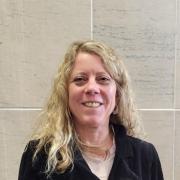Climate resilience: Deconstructing the new buzzword
<p>Defining <em>resilience</em> goes a long way to understanding what to put under the umbrella of climate resiliency. </p>

“Climate resiliency” is a new buzzword in environmental communications. Buzzwords are exciting because when they're successful, they convey important concepts in a compact and compelling way. At the same time, it's easy to assume audience understanding and for terms to be co-opted over time.
In March, I had the pleasure of co-facilitating the Climate, Cities and Behavior Symposium (CCB) at the Garrison Institute, a gathering of municipal and community leaders involved in climate and sustainability planning. The focus was on understanding the intersections between resiliency, sustainability and climate issues. It quickly became clear that while use of the term resiliency is rising, there are still a lot of issues to consider about what resiliency actually means and the pros and cons of using it to advance public understanding and engagement.
At CCB, Missy Stults from the University of Michigan proposed (“Fostering Resilience: From Theory to Operation”) that resiliency is a subset of the larger umbrella of sustainability; it's the foundation (or handle) that keeps the umbrella strong. There are different types of resiliency to consider such as economic, ecological, community, climate and social, so being clear on what you are building resiliency for is key.
According to the American Heritage Dictionary, resiliency is defined as “the ability to recover quickly from illness, change, or misfortune; buoyancy.” This is appealing because “climate resiliency” conveys both an inherent recognition of a threat that needs to be responded to, as well as a sense of efficacy – that it is possible to respond to that threat.
On the other hand, the other meaning of “resiliency” is “the property of a material that enables it to resume its original shape or position after being bent, stretched, or compressed; elasticity.” This is problematic because when used in the climate context, it can feed into the desire to return to the status quo as quickly as possible.
Next page: If not the status quo, then what?
Photo of green umbrella provided by 2happy via Shutterstock.
Mindy Fullilove, professor of Clinical Sociomedical Sciences and director of the Cities Research Group at Columbia University, provided an example at CCB of how climate resiliency can mean very different things to different audiences. For those who have the resources to protect themselves from extreme weather events and other challenges, resiliency conveys a sense of strength. On the other hand, for communities already struggling due to economic and social injustice, resiliency can imply an expectation that people within those communities continue to withstand challenges, largely without the resources or support to adequately do so.
At the crux of this conflict is the idea that resiliency is about resuming an original form, a bouncing back to what was. This fails to recognize that the status quo wasn’t working in the first place as we were already on an unsustainable and inequitable path. The desire to return to normal in the wake of a disturbance is understandable; however, what is needed is a “bouncing forward” to new approaches that tackle both the reality of a two-degree Celsius temperature increase as well as the systemic injustices that threaten the well-being of citizens who often also face some of the worst climate impacts.
My sense is just like with sustainability, using resiliency as the new buzzword will not solve challenges engaging the public in these issues. Perhaps more important is to focus on conveying the characteristics that resilient systems and communities should reflect such as flexibility, diversity and transparency, and to highlight strategies that enhance resilience in a range of areas, such as disaster risk-reduction and improving the quality of daily life.
A good example of an organization focusing on community-level solutions that illustrate both climate as well as social resiliency is IOBY (In Our Backyards). Founded by Cassie Flynn (see her Garrison presentation), Erin Barnes and Brandon Whitney, IOBY emphasizes what people want to see in their neighborhoods versus the typical “not in my backyard” environmental approach. By helping citizens organize and fund local projects, IOBY is fostering community buy-in for solutions, a network of long-term stewards, and visible benefits of taking action such as having access to green spaces and organic food.
What is perhaps most interesting about IOBY, however, is how it has become a network for organizing citizens around other local challenges. For example, in the wake of Hurricane Sandy, IOBY participants helped organize neighborhood response efforts by using the lists of project volunteers in their area as well the IOBY neighborhood gardens to gather and coordinate.
Social resiliency and connectivity are among the most important capacities to develop as we learn to prepare for local climate impacts. Amplifying local climate solutions that benefit and bring people together is critically needed so we can begin to close the climate efficacy gap and build hope for the future.
This article reprinted with permission from ClimateAccess.





